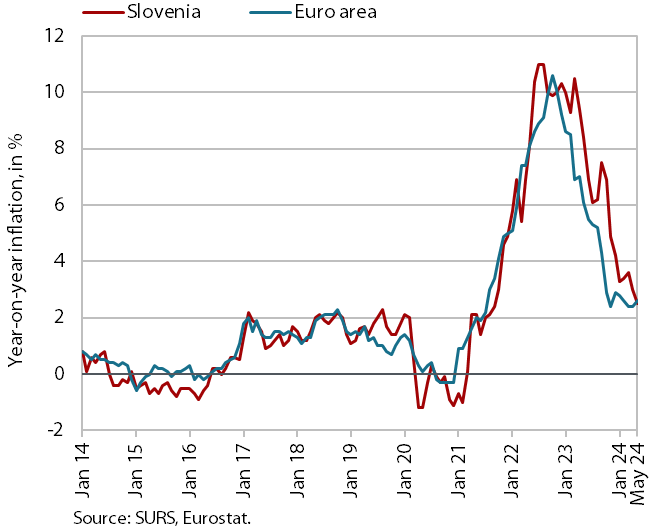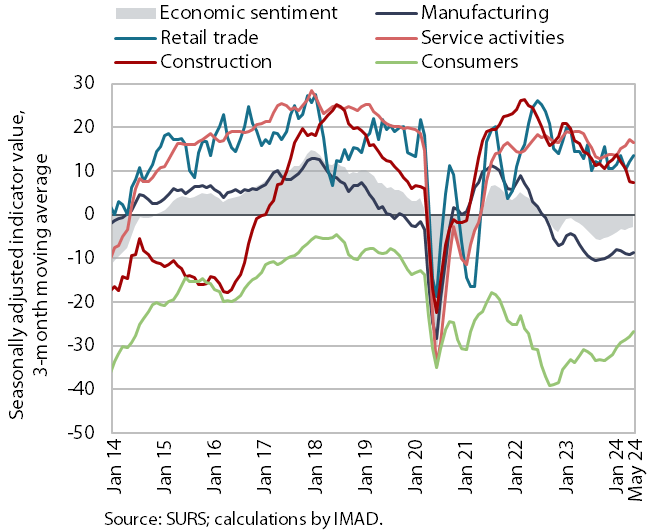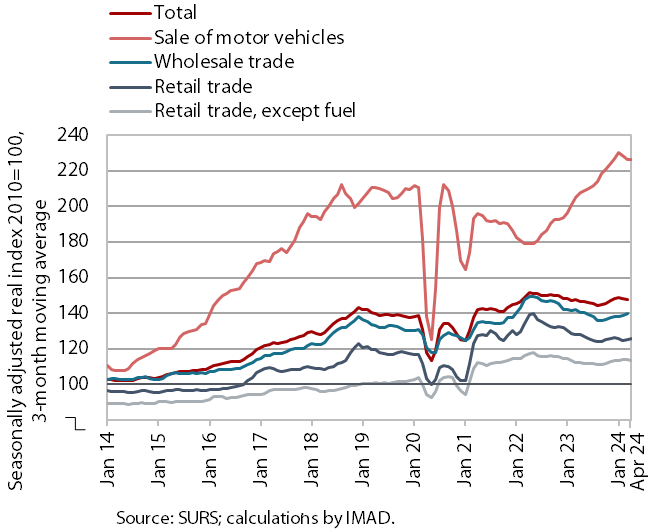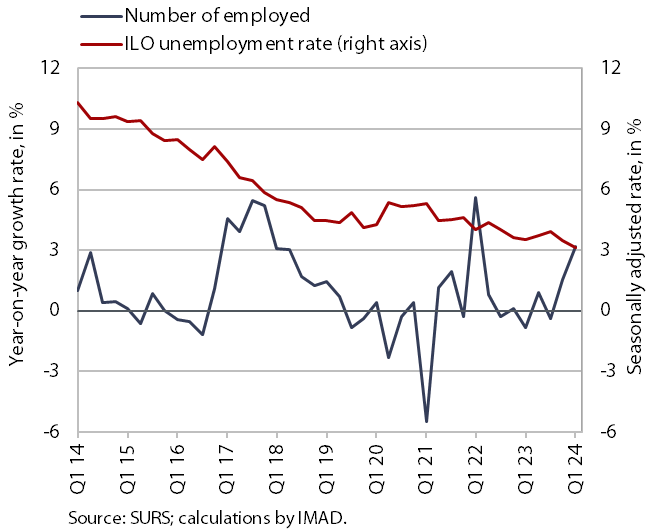Charts of the Week
Charts of the week from 27 to 31 May 2024: consumer prices, economic sentiment, turnover in trade and active and inactive population
Year-on-year growth in consumer prices fell for the second consecutive month in May, reaching 2.5%, the lowest level since September 2021. This moderation was mainly due to significantly lower price growth in the group housing, water, electricity, gas and other fuels. The economic sentiment indicator fell slightly month-on-month in May, although it remained higher year-on-year for the second consecutive month. Amidst moderating inflation, consumers are much more optimistic compared to the same period last year. Sentiment in manufacturing also improved compared to May last year, with higher indicators for expected production and exports. After stagnating in the first quarter, real turnover in most trade sectors increased month-on-month in April and was also higher year-on-year. According to survey data, the decline in the number of the unemployed and growth in the number of persons in employment continued in the first quarter.
Consumer prices, May 2024

Year-on-year growth in consumer prices fell for the second consecutive month in May, reaching 2.5%, the lowest level since September 2021. Prices rose by 0.5% month-on-month, but the increase was half the five-year May average and also the lowest for this period. The moderation of year-on-year growth was mainly due to almost one-third lower price growth in the group housing, water, electricity, gas and other fuels (3.1%) compared to previous months. Year-on-year price growth in alcoholic drinks and tobacco (4.2%) was also lower, attributed to a higher base last year due to an increase in excise duties on tobacco. Prices of food and non-alcoholic beverages were 0.2% lower year-on-year after stagnating in April. Year-on-year growth in prices of semi-durable goods remained roughly unchanged (1.7%), while prices of durable goods continue to fall year-on-year (−0.9%). Growth in service prices further moderated (4.1% year-on-year). Among all groups of goods and services, the strongest year-on-year price increases were still recorded in restaurants and hotels (6.8% year-on-year) and education (6%).
Economic sentiment, May 2024

The economic sentiment indicator fell slightly month-on-month in May, although it remained higher year-on-year. The monthly decline was due to lower confidence indicators in retail trade and service activities, while confidence increased in construction and manufacturing and remained unchanged among consumers. Economic sentiment improved year-on-year for the second consecutive month. With inflation easing, consumers are much more optimistic than they were a year ago and in particular had higher expectations regarding the household financial situation in May. Sentiment in manufacturing was also better than in the same period last year, with higher indicators for expected production and exports. Sentiment in construction was significantly lower but still above the long-term average.
Turnover in trade, March−April 2024

After stagnating in the first quarter, real turnover in most trade sectors increased month-on-month in April, according to preliminary data, and was also higher year-on-year. In the first quarter, only turnover in wholesale trade increased quarter-on-quarter, while it was lower year-on-year (−1%) for the fifth consecutive quarter. Turnover in retail sale of non-food products was also down year-on-year (−1%), while turnover in retail sale of food, beverages and tobacco rose year-on-year (by 4%). Following high growth last year, turnover in the sale of motor vehicles is stagnating this year, while it was still significantly higher year-on-year (by 9%). According to preliminary data from SURS, turnover in most sectors picked up in April and, with three more working days than in April last year, was also higher year-on-year.
Active and inactive population, Q1 2024

According to survey data, the number of unemployed was lower year-on-year in the first quarter of this year, while the number of persons in employment increased. Thirty-six thousand persons were unemployed, which is 5.3% less than in the first quarter of last year. The survey unemployment rate (3.4%) fell by 0.4 p.p. year-on-year. As economic activity continued to increase in the first quarter of this year, the year-on-year increase in the number of persons in employment (3.2%) was more pronounced than in previous quarters. This growth was mainly driven by an increase in employees in labour relation and the self-employed.
